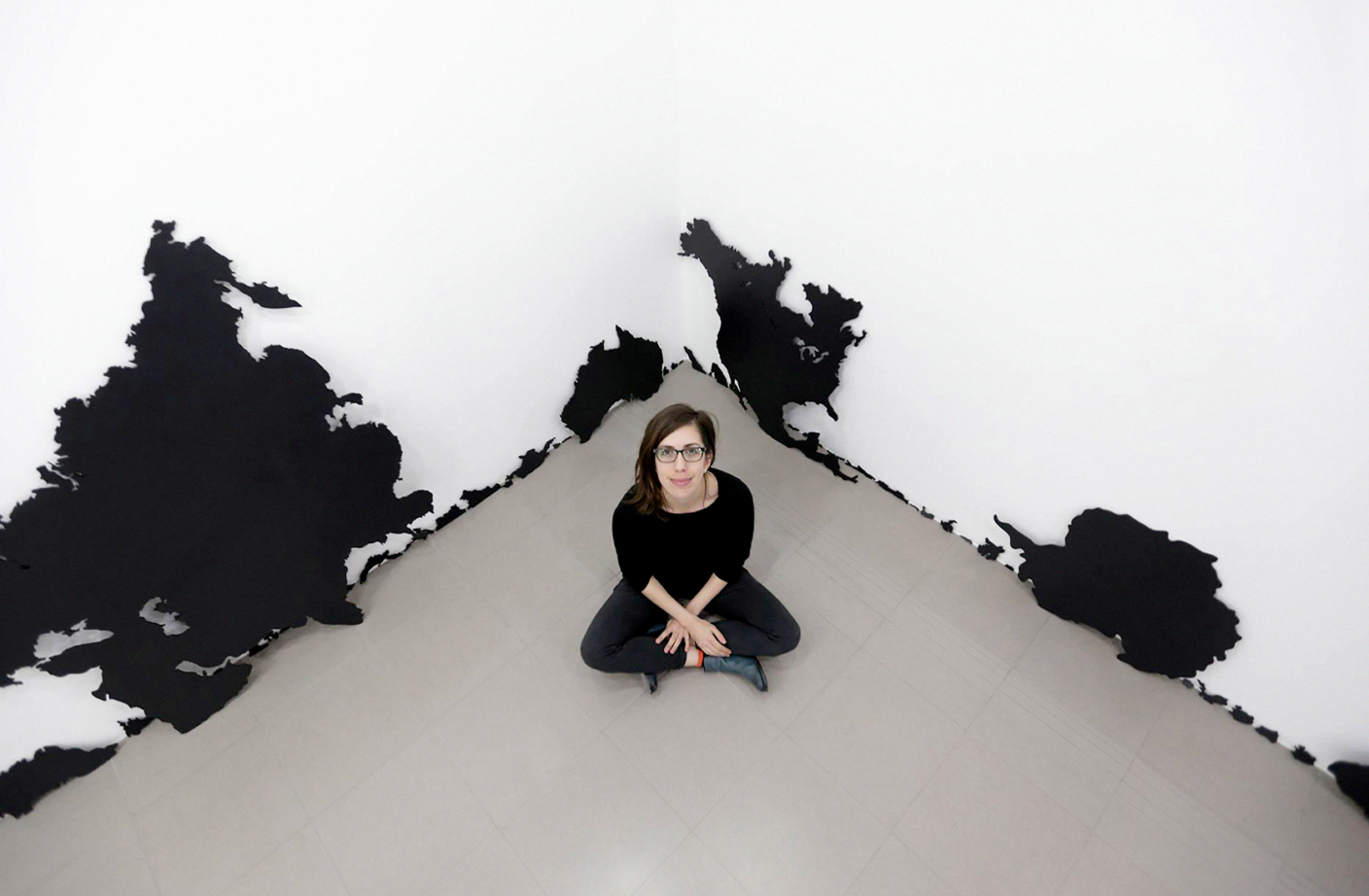
Born in Maceió, Marina Camargo completed her bachelor’s and master’s degrees in Visual Arts at the Institute of Arts of the Federal University of Rio Grande do Sul (UFRGS). His research has always been marked by an expanded notion of drawing, in which image and thought are mutually constituted. It was with the move to Barcelona, where he studied Visual Culture at the Universitat de Barcelona, that themes related to cartography and displacement became recurrent in his work. For the artist, the cartographic representation of spaces is a way of thinking about the orders of the world: the different historical, economic, political and social narratives form maps of different natures. Despite being based on reality data, they carry meanings that go beyond scientific precision. Marina Camargo renders the representation of the map using different media and supports—either in three-dimensional installations in rubber or metal, or in the form of drawings, photographs, enlargements or paintings—, surpassing any objective dimension of cartography. He is more interested in the failure of these representations, what remains incomplete in the accounts of the world; they are vestiges of the representation of space, ruins of historical times that mark inhabited spaces and places. Maps that are marked by narratives and texts told without words, but articulated by their own vocabulary. Every map is made of invention, every map has a narrative dimension that brings it closer to a fiction.
In the Soft Map series, the use of flexible materials such as rubber and latex gives a physical distortion to the map shapes. This fluid dimension is mixed with an erotic dimension of these works, in which the corporeity attributed to the maps is something that does not belong to the nature of cartography, referring to a sculptural dimension of forms. In this sense, the reference to Lygia Clark’s ‘Obra mole’ series is central, as it goes beyond the idea of sculpture through forms that do not have an inside or an outside, forms that expand from cut, folded, sometimes suspended surfaces. Finally, Marina Camargo’s works show two different ways of perceiving places: through the representation of space or the presence in places (perception of matter). What is announced between these two modes is a marked sense of displacement both in his life and in his work.
In 2010, Marina Camargo received a scholarship from the Deutscher Akademischer Austauschdienst [DAAD] to study with Peter Kogler at the Akademie der Bildenden Künste in Munich. She currently lives and works between Porto Alegre and Berlin. His works are part of some important national collections, such as the Rio Art Museum (MAR), the Rio Grande do Sul Art Museum (MARGS), the São Paulo Cultural Center (CCSP), among others.

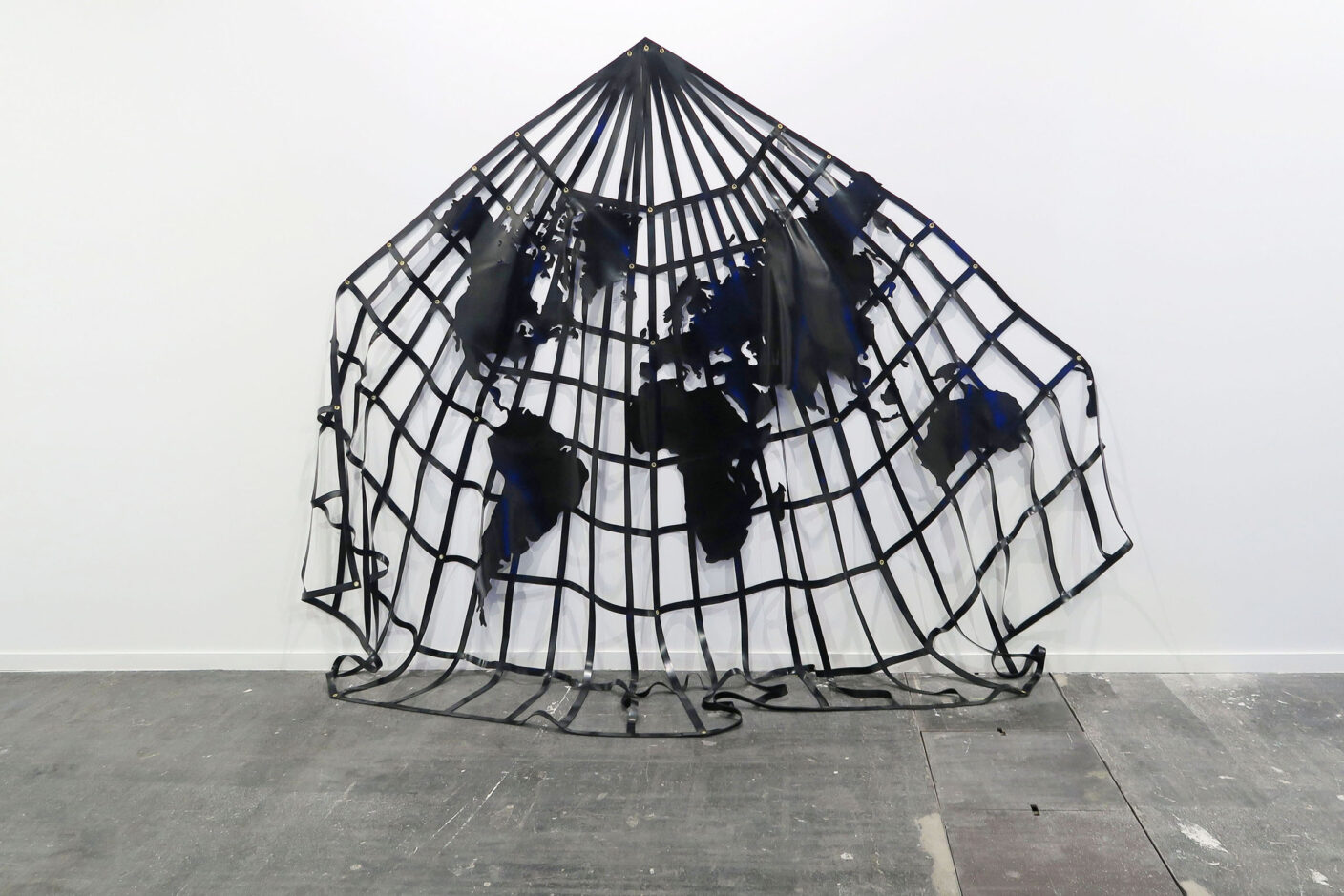
Mapa-Mole [Sul Infinito]
2022
Rubb
220 × 400 cm
In Soft-maps, cartographic elements are transformed into malleable rubber objects, deforming the maps’ original forms, and deconstructing the grid that guides the geographic representation of the continents. In Soft-Map [Infinite outh], the world map projection shows the south and the north in equal proportions. In this cartographic projection, drawn by John F. W. Herschel in 1859, the north pole is represented by a point, while the south pole appears on diverging lines, projecting into infinite space.

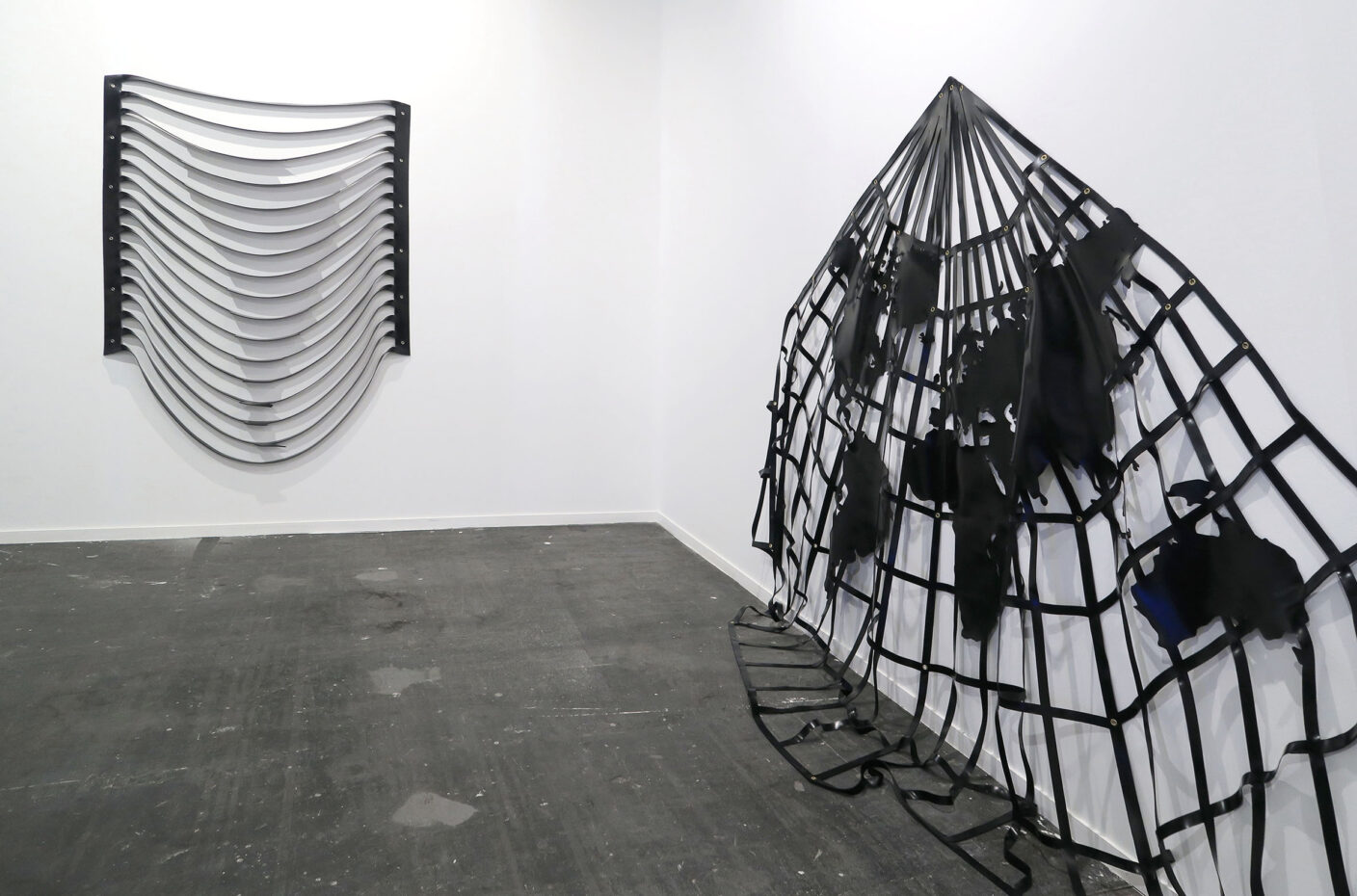
View of Cartografías fluidas y otras metamorfosis del espacio, Marina Camargo’s solo exhibition at Fundación Giménez Lorente, in Valencia, Spain, 2022.
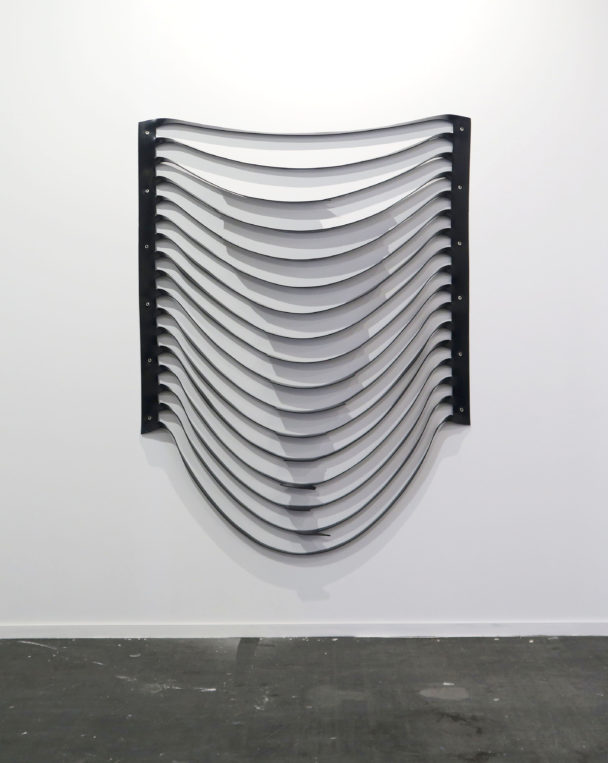
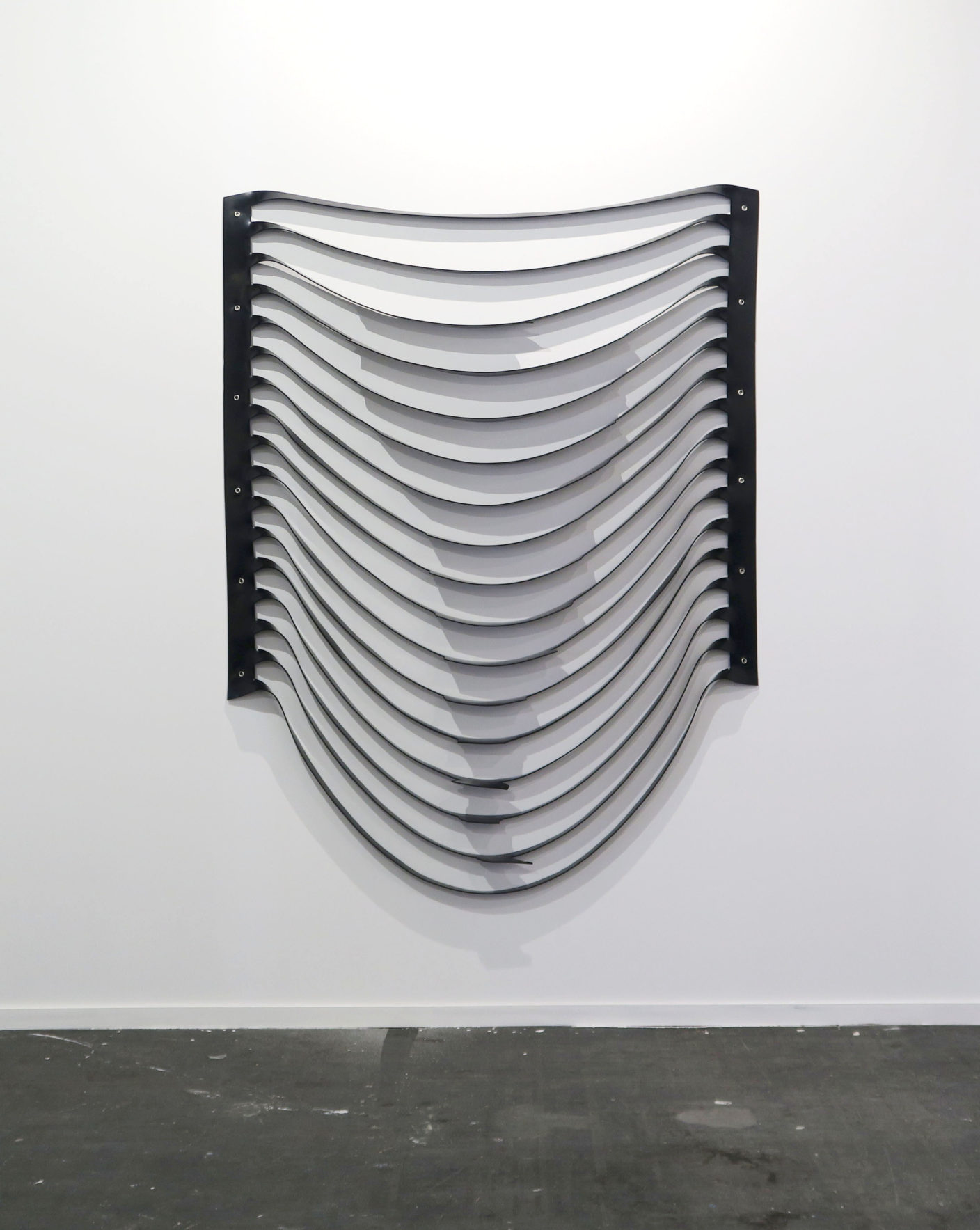
Mapa–Mole [Espectro]
202
Rubber
190 × 145 cm
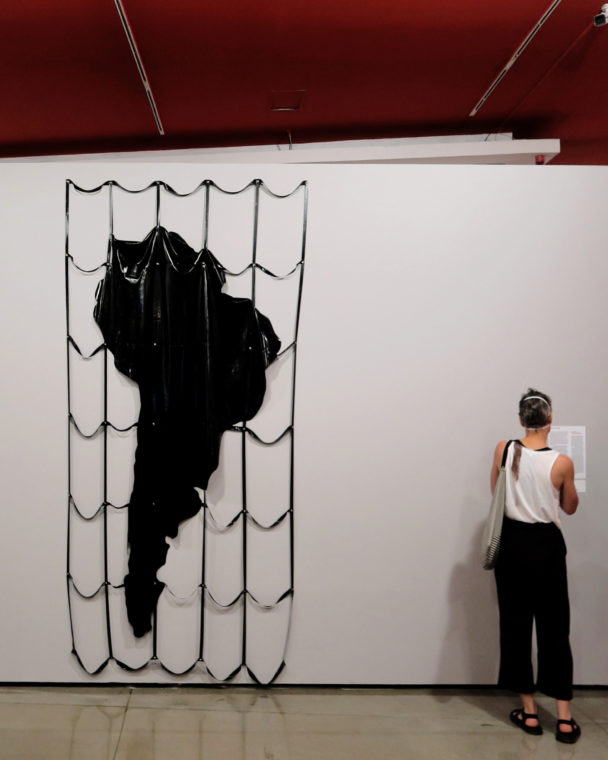

View of the 37º Panorama da Arte Brasileira – Sob as cinzas, brasa, at the Museu de Arte Moderna in São Paulo, 2022.
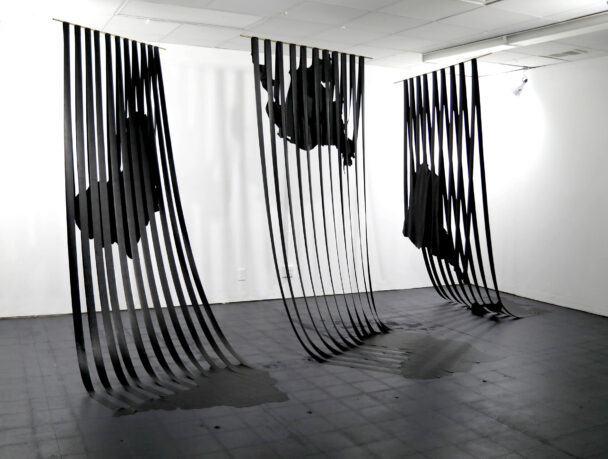
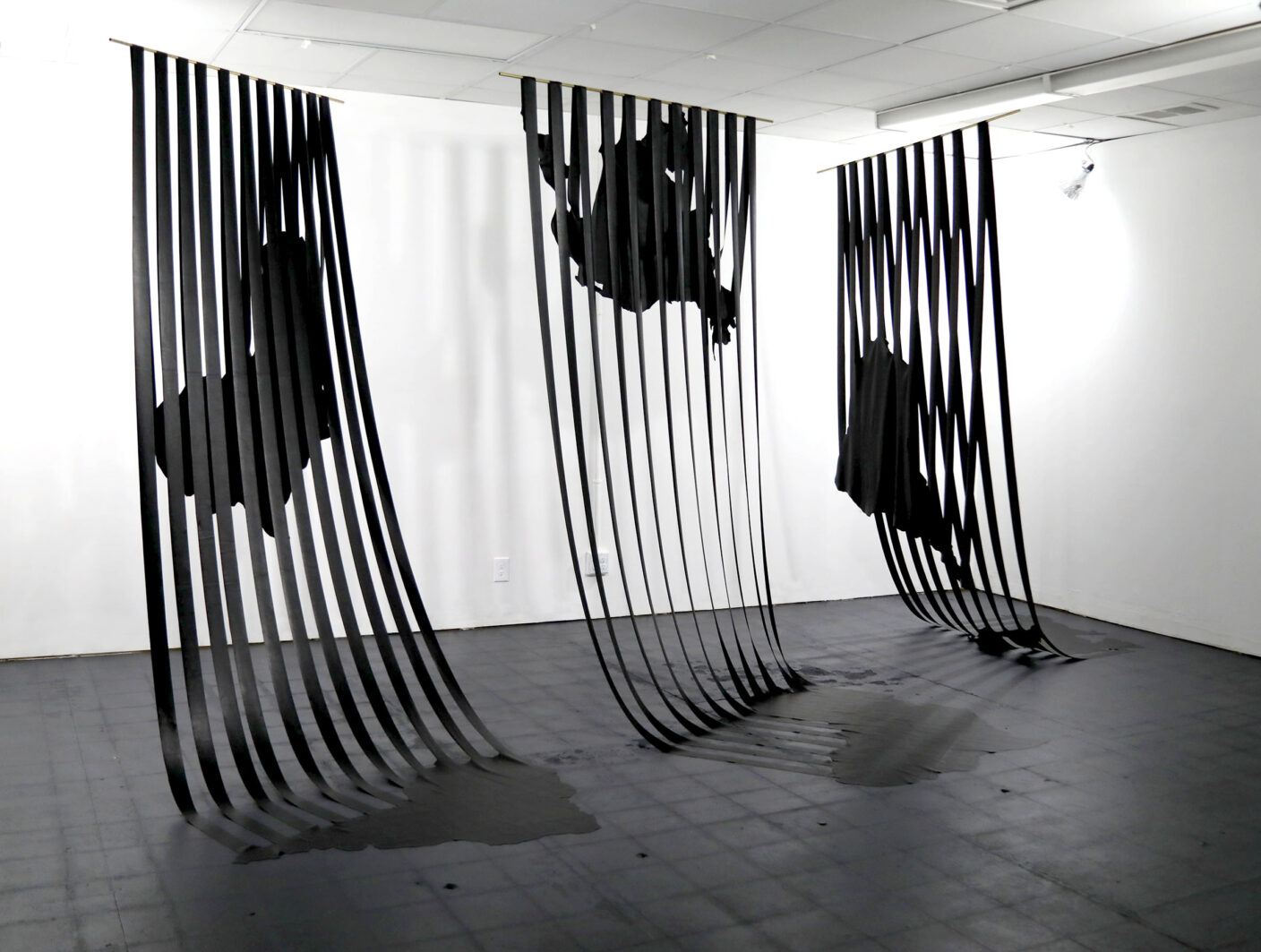
Mapa-Mole [Fluxo]
2021
Rubber and brass rod
250 × 140 ×200 cm [ea]
—
Photo: Tiffany Danielle Elliott


Mapa-Mole [Fluxo]
2021
Rubber and brass rod
250 × 140 ×200 cm [each]
—
Photo: Tiffany Danielle Elliott
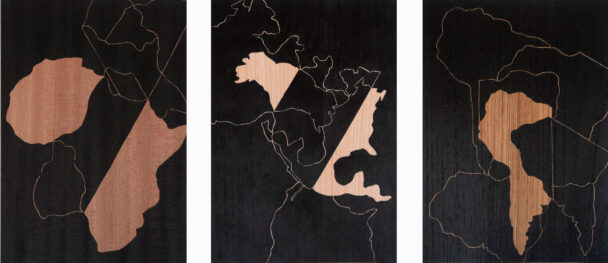
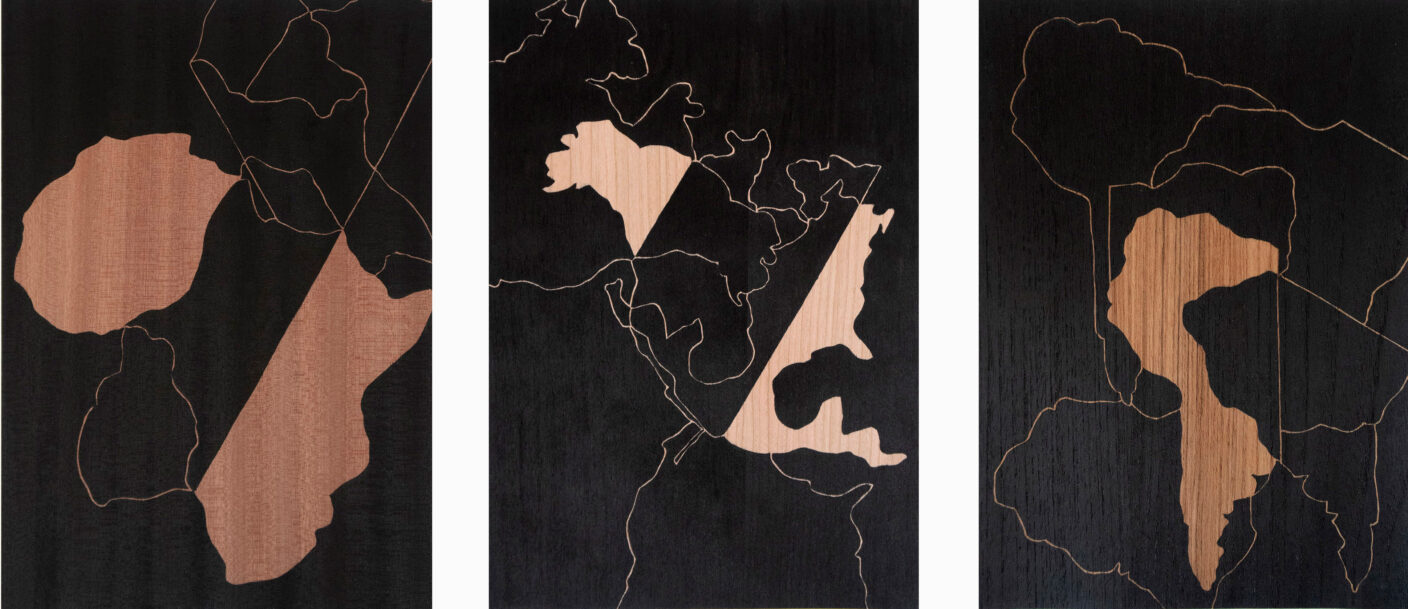
Geografias desdobradas
202
1| Unfolded Geographies [Africa]
Ink on African mahogany laminated wood
29,7 × 21 cm
2| Unfolded Geographies [North America]
Ink on American cherry wood laminated sheet
29,7 × 21 cm
3| Unfolded Geographies [South America]
Ink on teakwood laminated sheet
29,7 × 21 cm
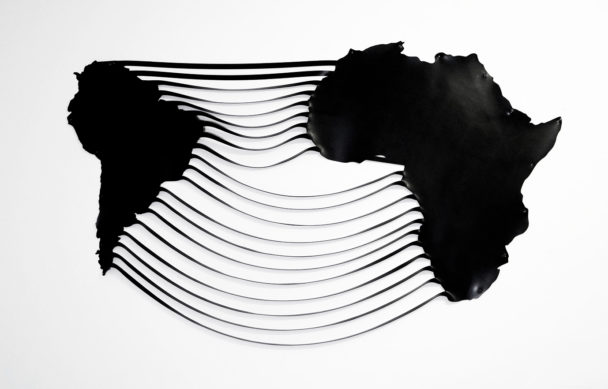
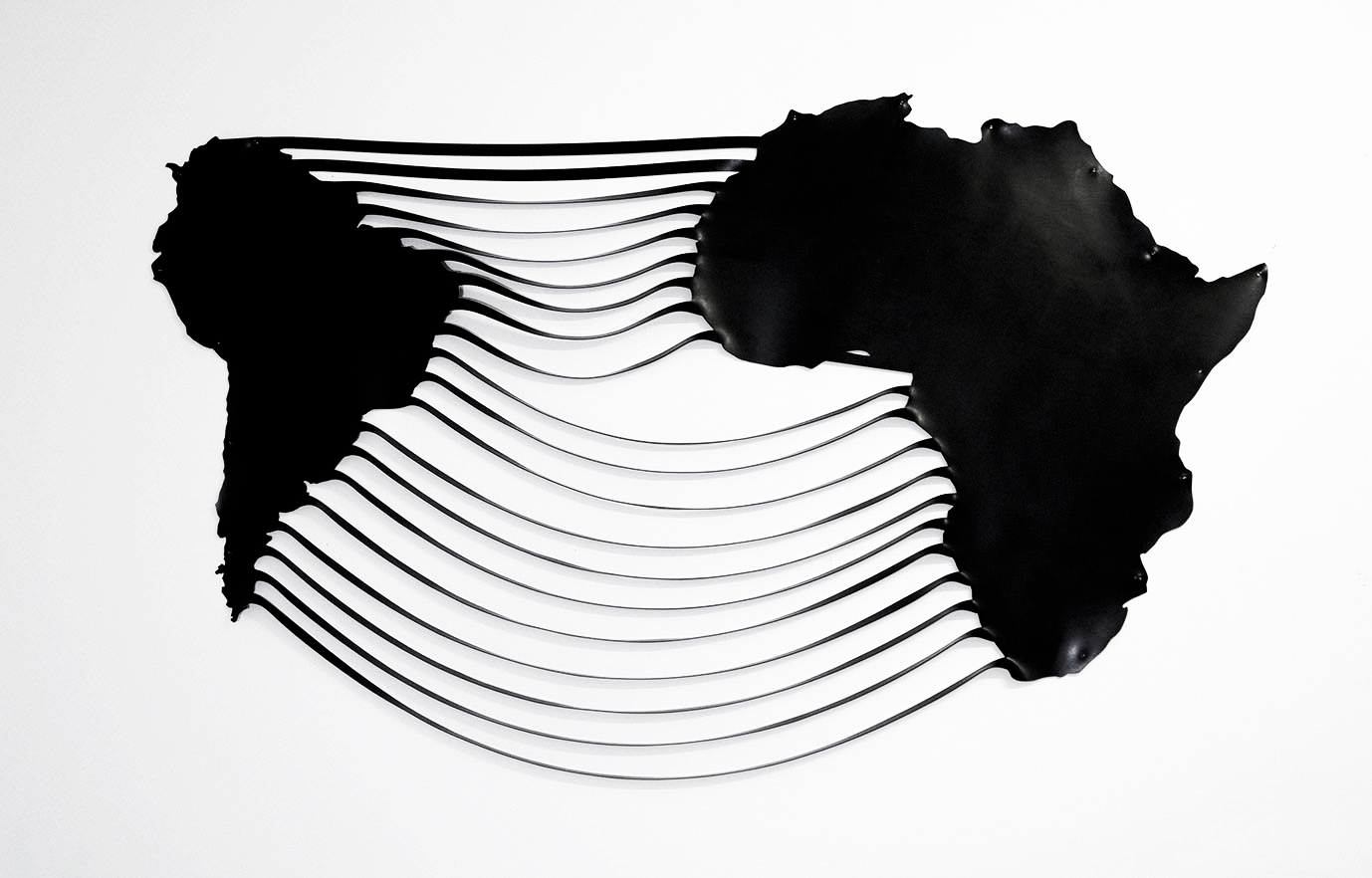
Mapa–Mole [Atlântico Sul]
2020
Rubber cutout
150 × 240 cm
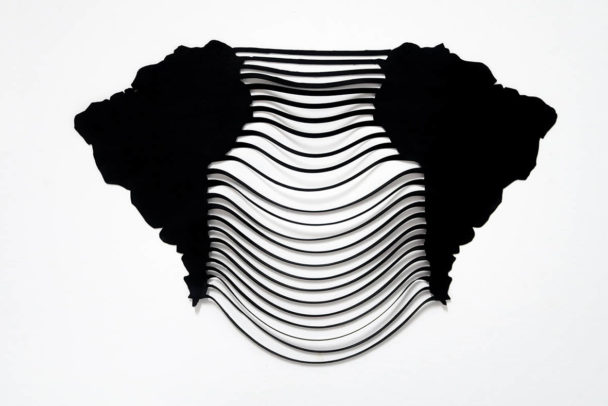
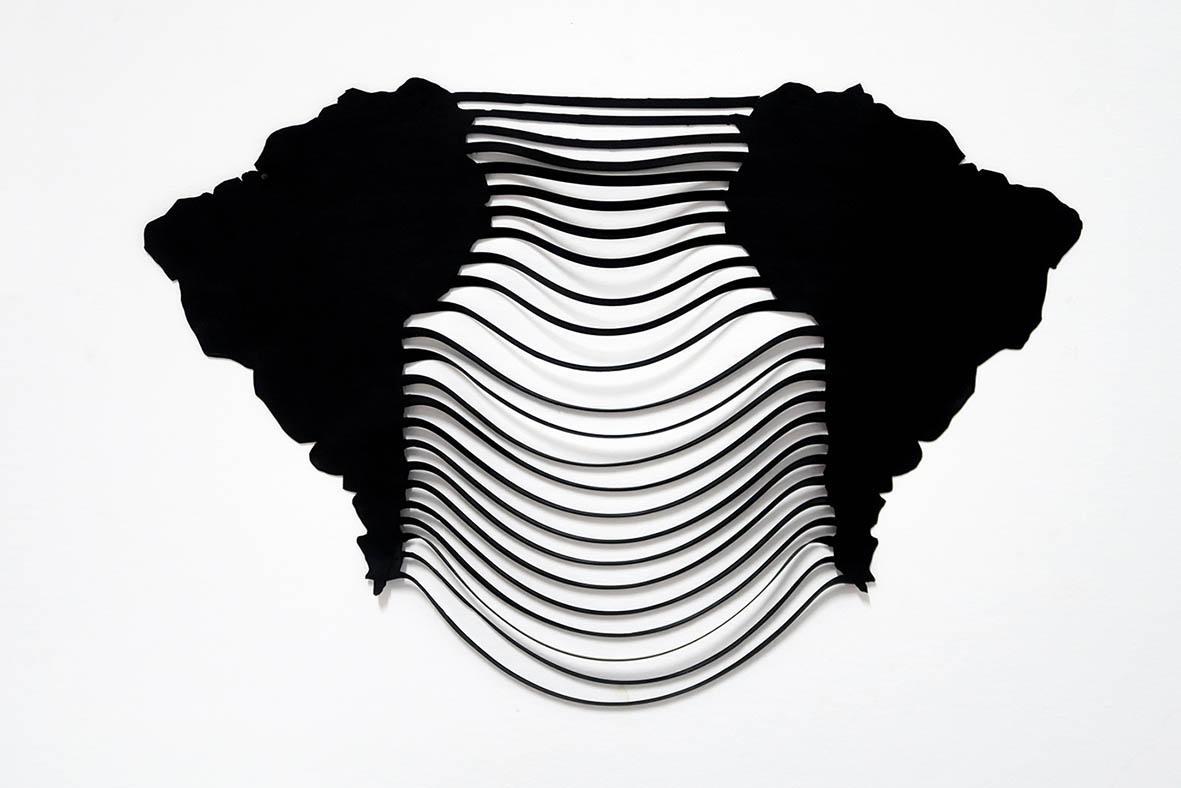
Mapa–Mole [América do Sul]
2020
Rubber cuto
10 × 230 cm
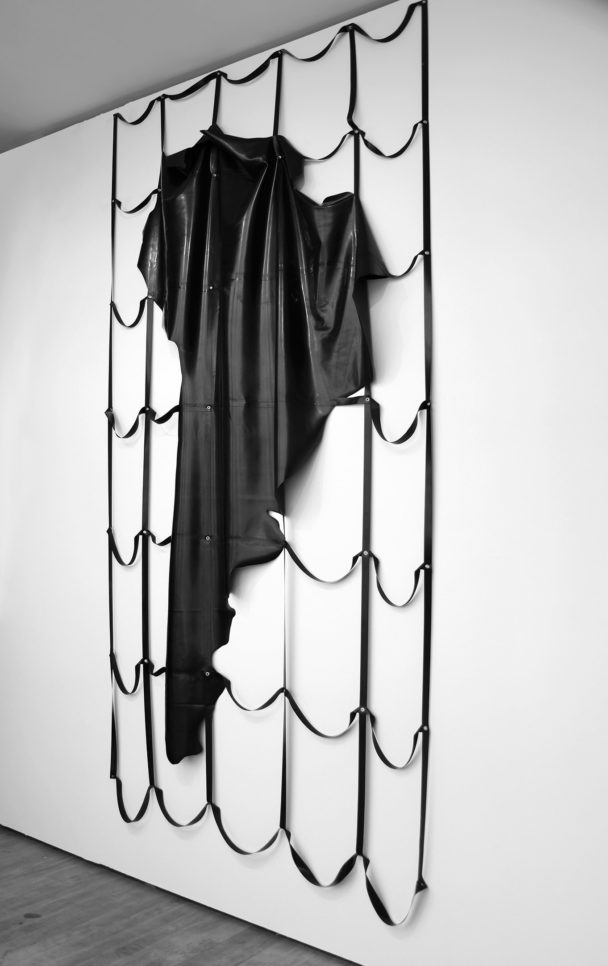
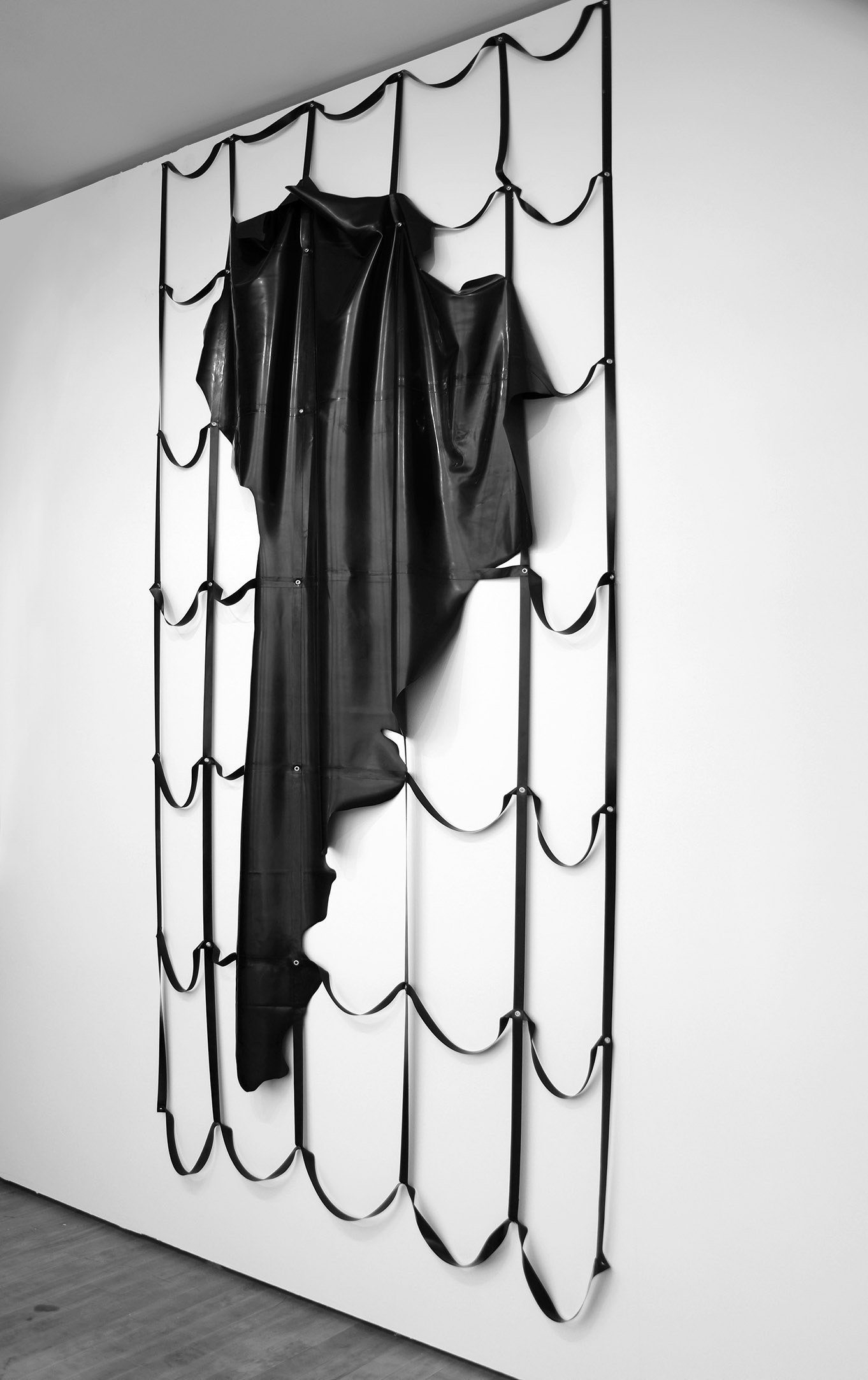
América-Látex [pós-extrativismo]
2020
Latex
300 × 145 cm
[installed]
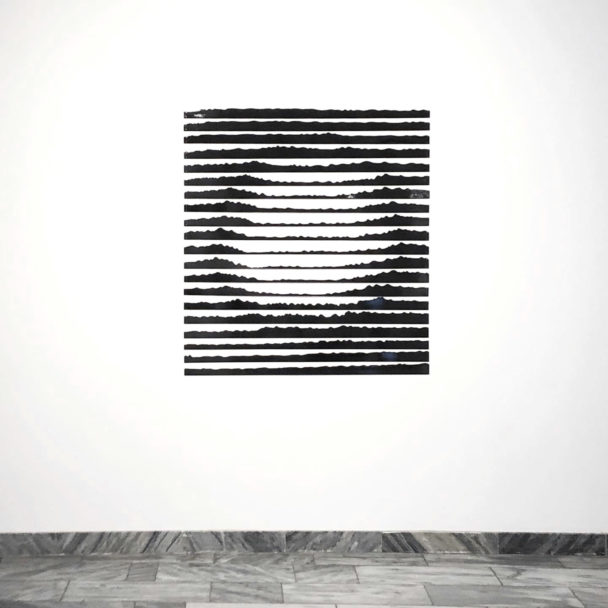
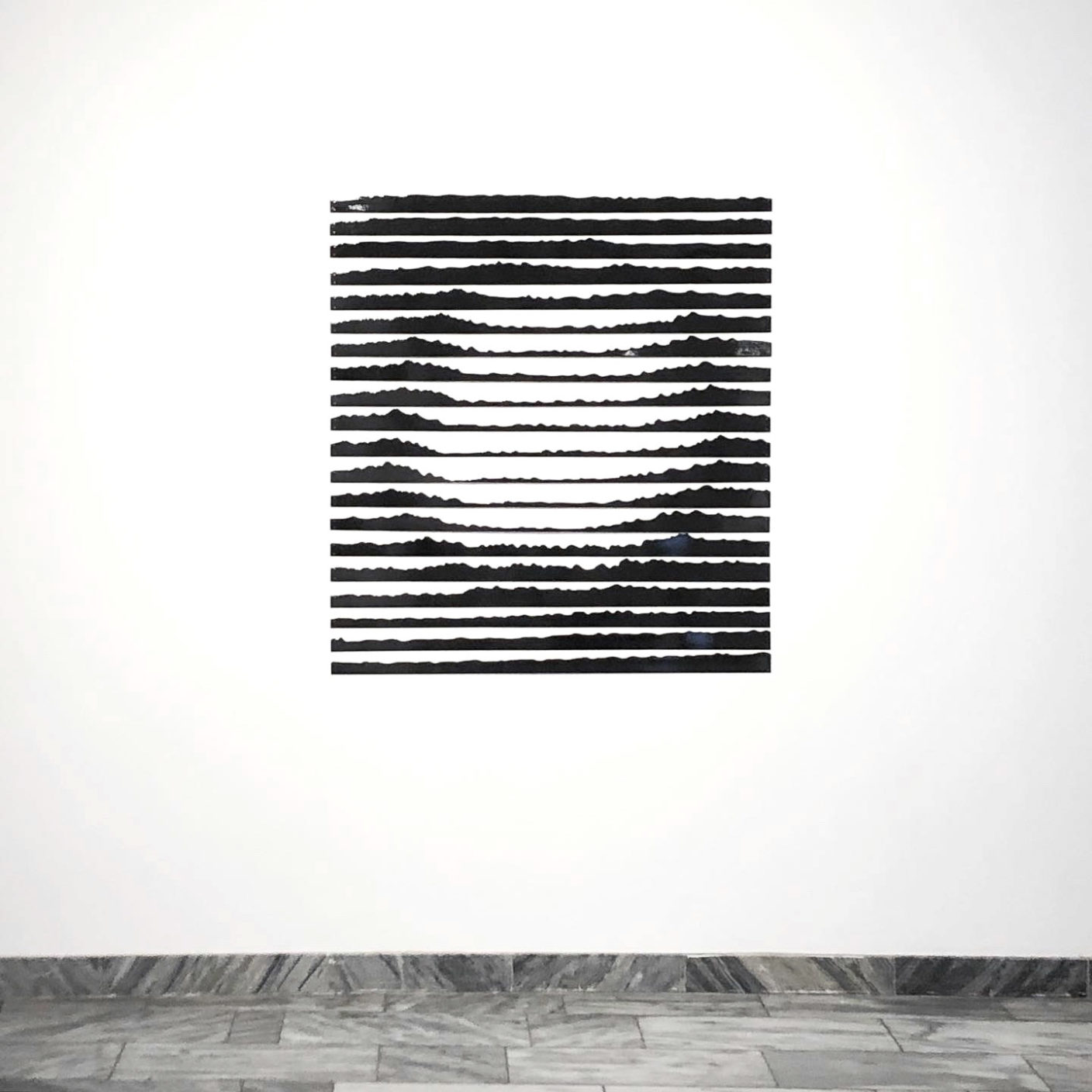
Topografia de cratera
2019
Aluminum cutout
with electrostatic painting
114 x 114 cm
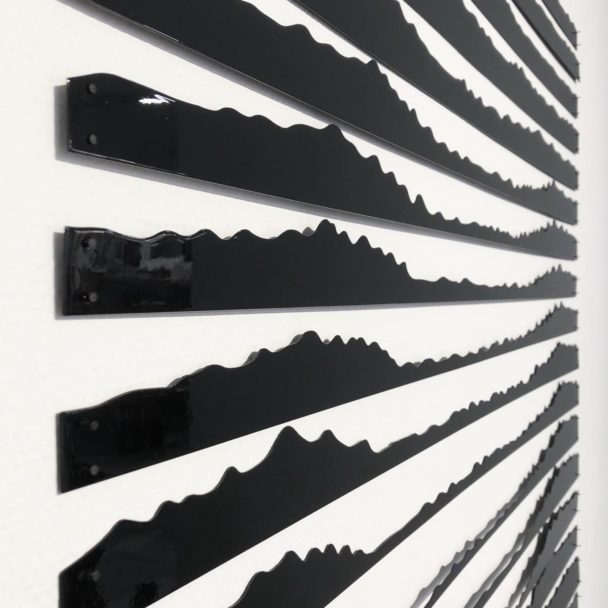

Topografia de cratera
2019
Electrostatic painting on aluminum cutout
114 x 114 cm
The depiction of the relief of a crater is divided into 20 drawings. Each drawing shows a front view of part of the topography, referring to landscape images. There are two distinct dimensions of the work: when closely observed, the drawings refer to images of mountain silhouettes; when seen from afar, the crater drawing becomes more evident.
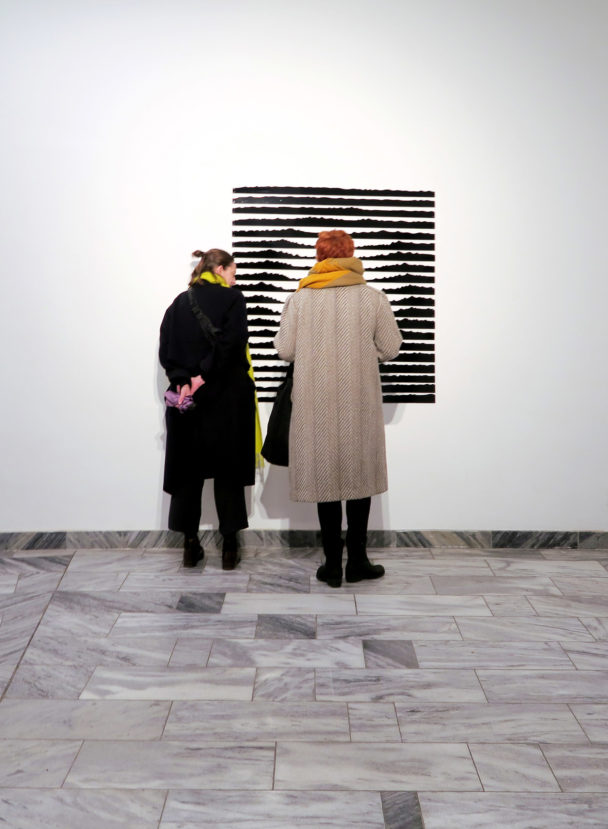
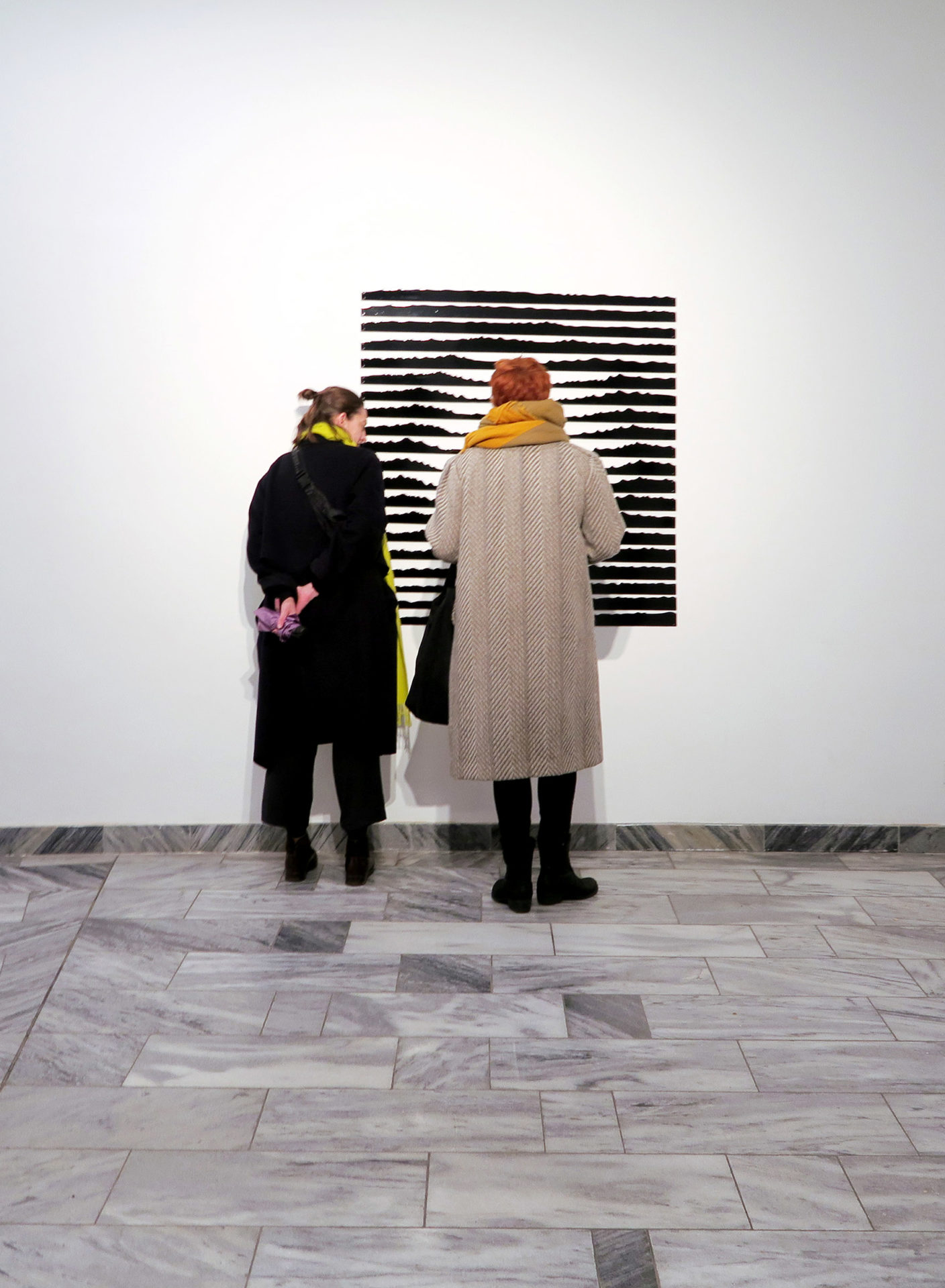
Topografia de cratera
2019
Aluminum cutout
with electrostatic painting
114 x 114 cm


Mapa–Mole I
2019
Rubber cutout
160 × 140 × 20 cm
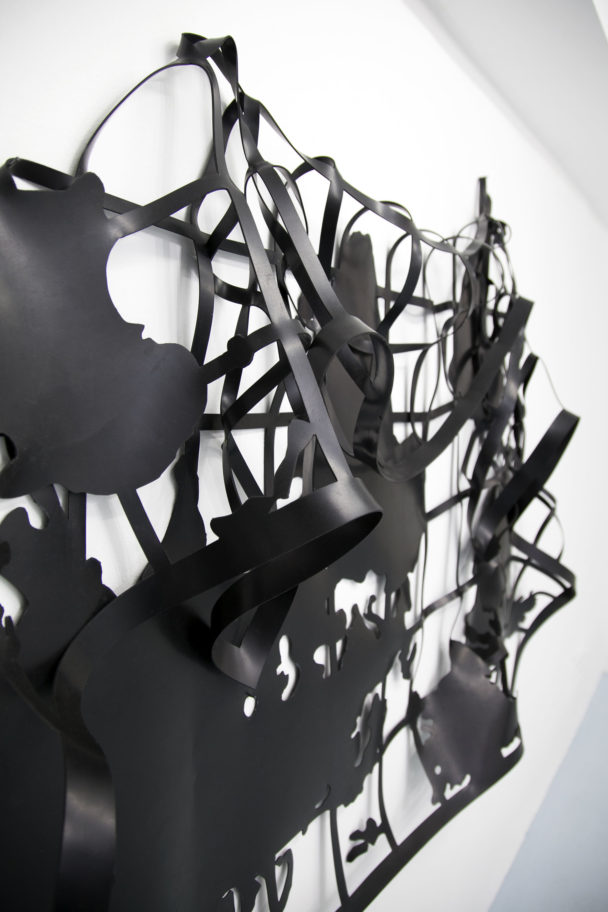
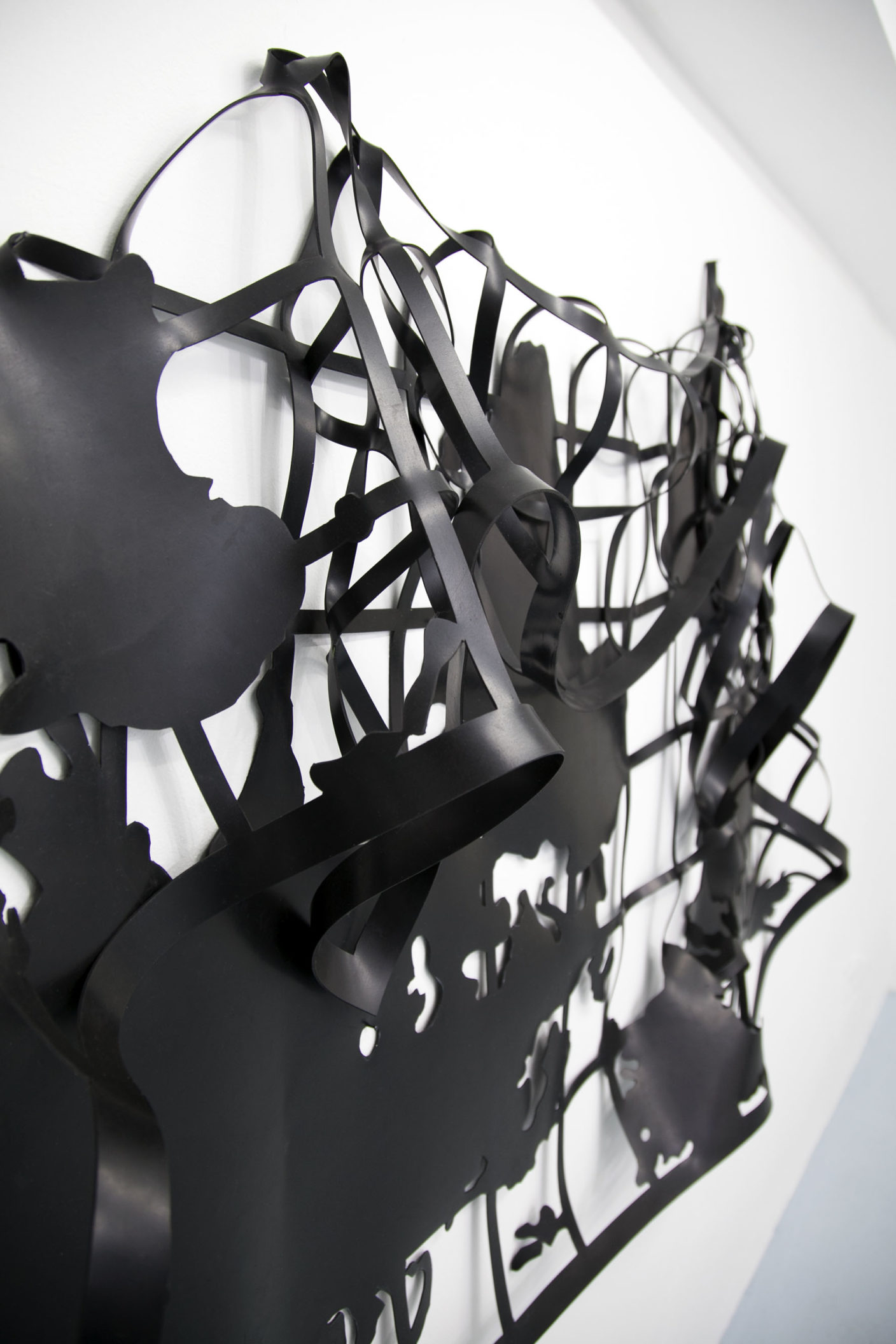
Mapa–Mole I
2019
Rubber cutout
160 × 140 × 20 cm
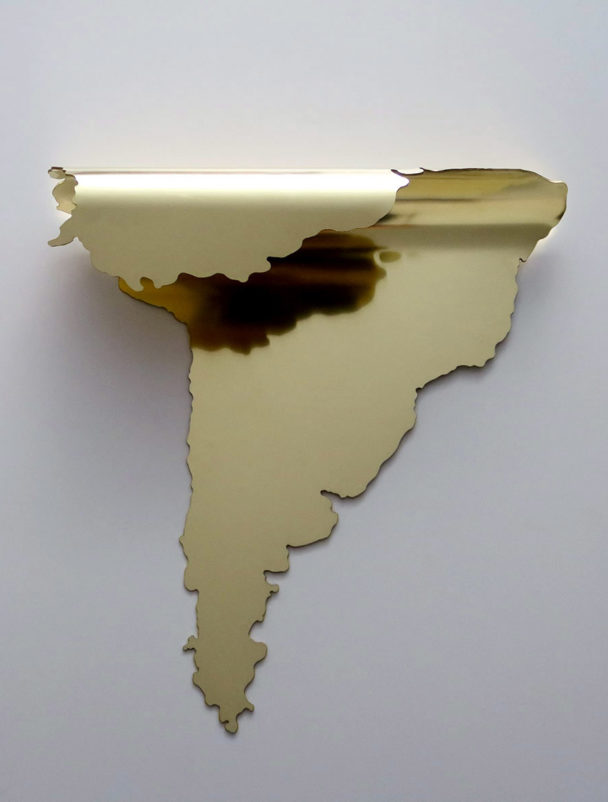

Continentes dobrados [América do Sul]
2019
Brass
42 × 42 × 10 cm
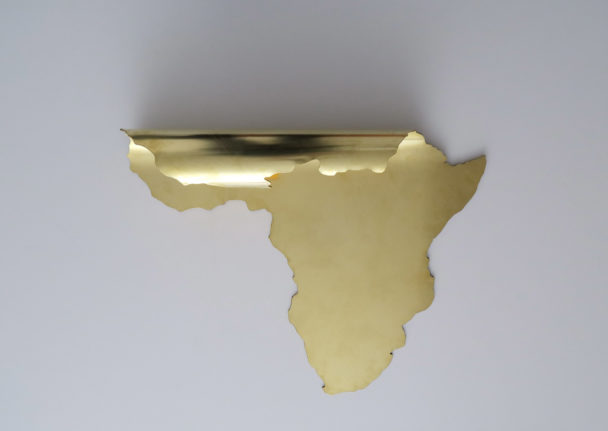

Continentes dobrados [África]
2019
Brass
55 × 43 × 10 cm
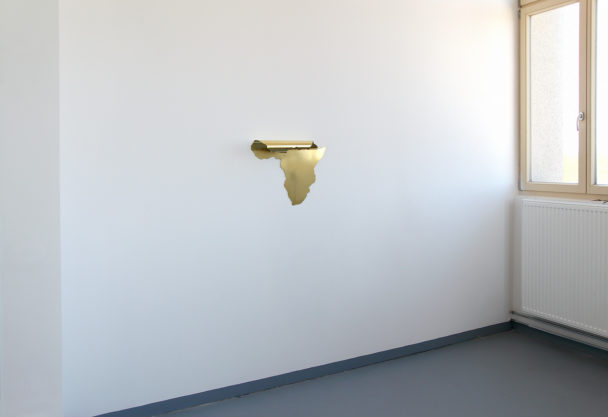

Continentes dobrados [África]
2019
Brass
55 × 43 × 10 cm
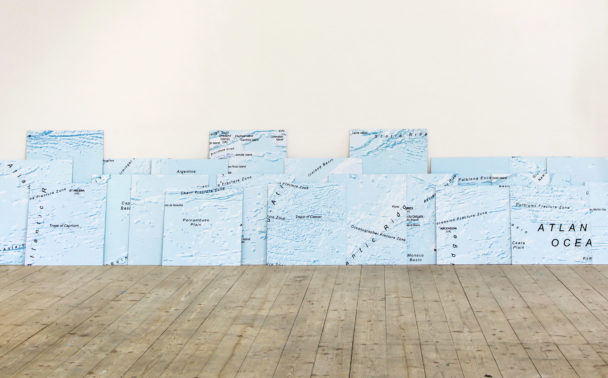

Alto-mar [Atlântico]
2018
Digital print on Alu-Dibond
90 × 450 cm [variable dimension]
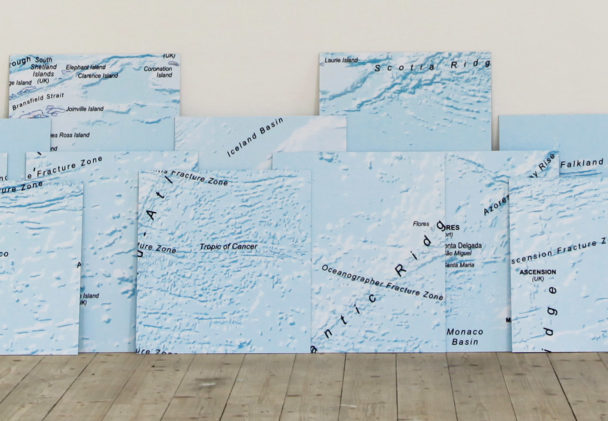

Alto-mar [Atlântico]
2018
Digital print on Alu-Dibond
90 × 450 cm [variable dimension]
The oceans transcend the international boundaries. The Convention of the High Seas states a specific sense of freedom: the oceans belong to no specific land. Therefore the international waters have no sovereignty, defining that all states have the freedom to fish, research, install cables, navigate on the seas, etc. This zone of freedom and without borders evokes a sense of utopia, where everything is potentially possible. At the same time, the oceans are crossing areas.

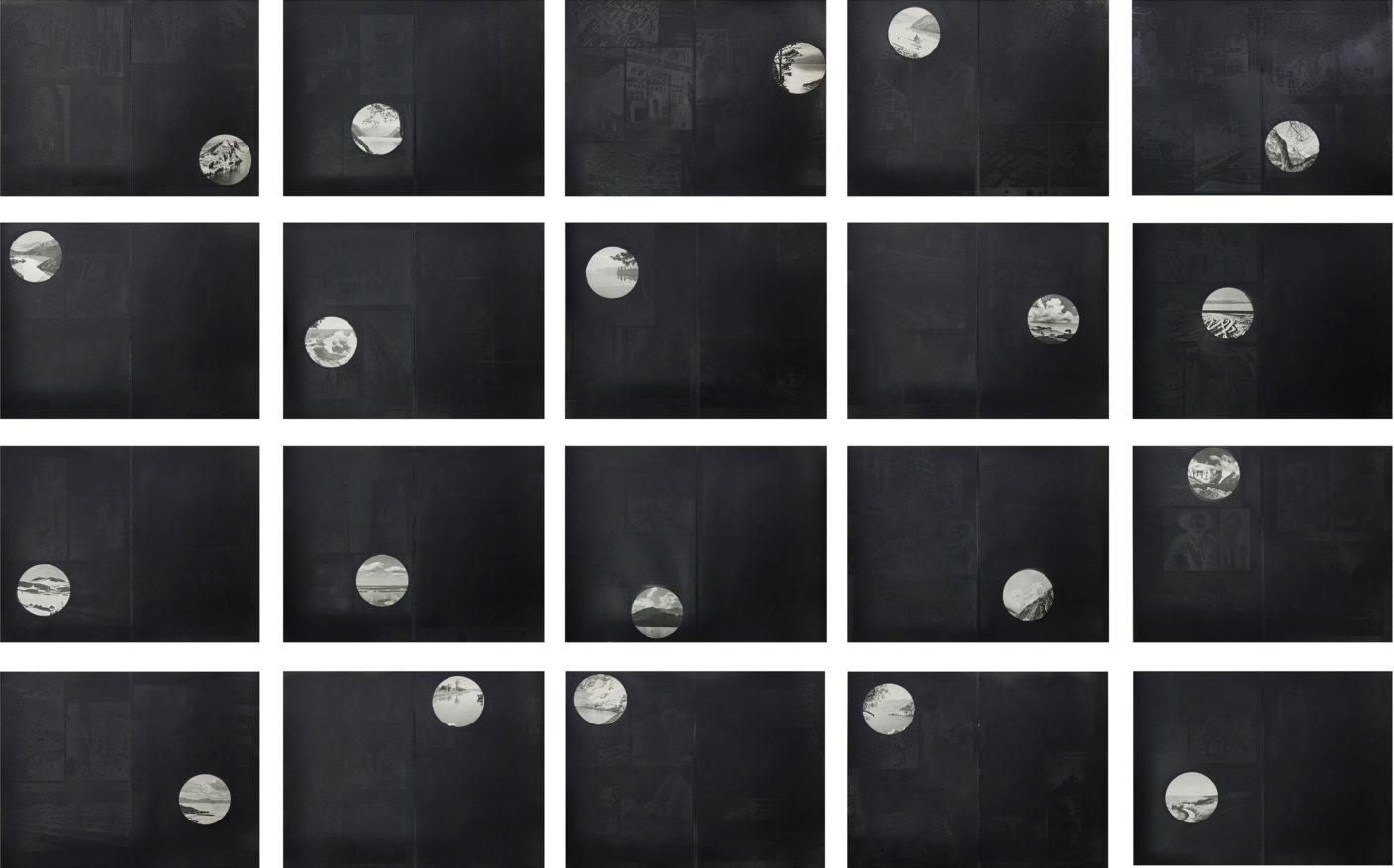
Notas sobre a história universal
2018
Painting on book pages
13 × 23 cm [each]
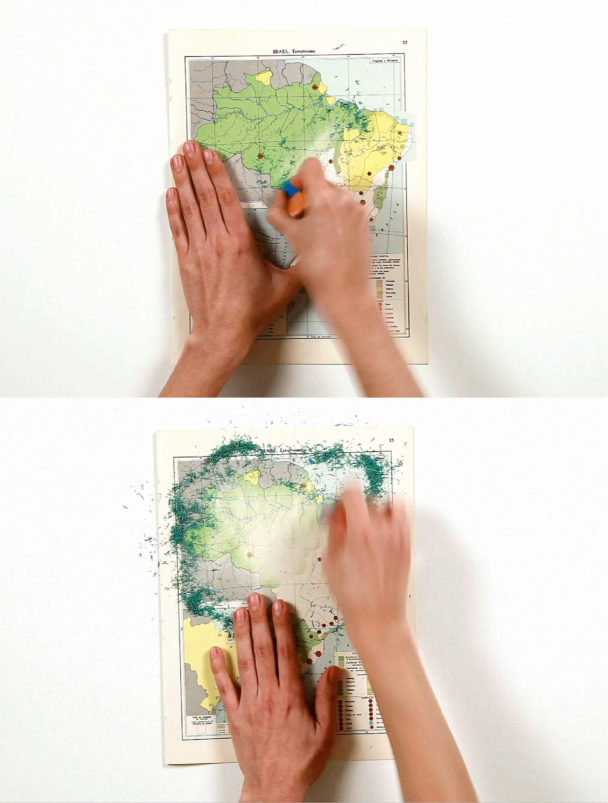
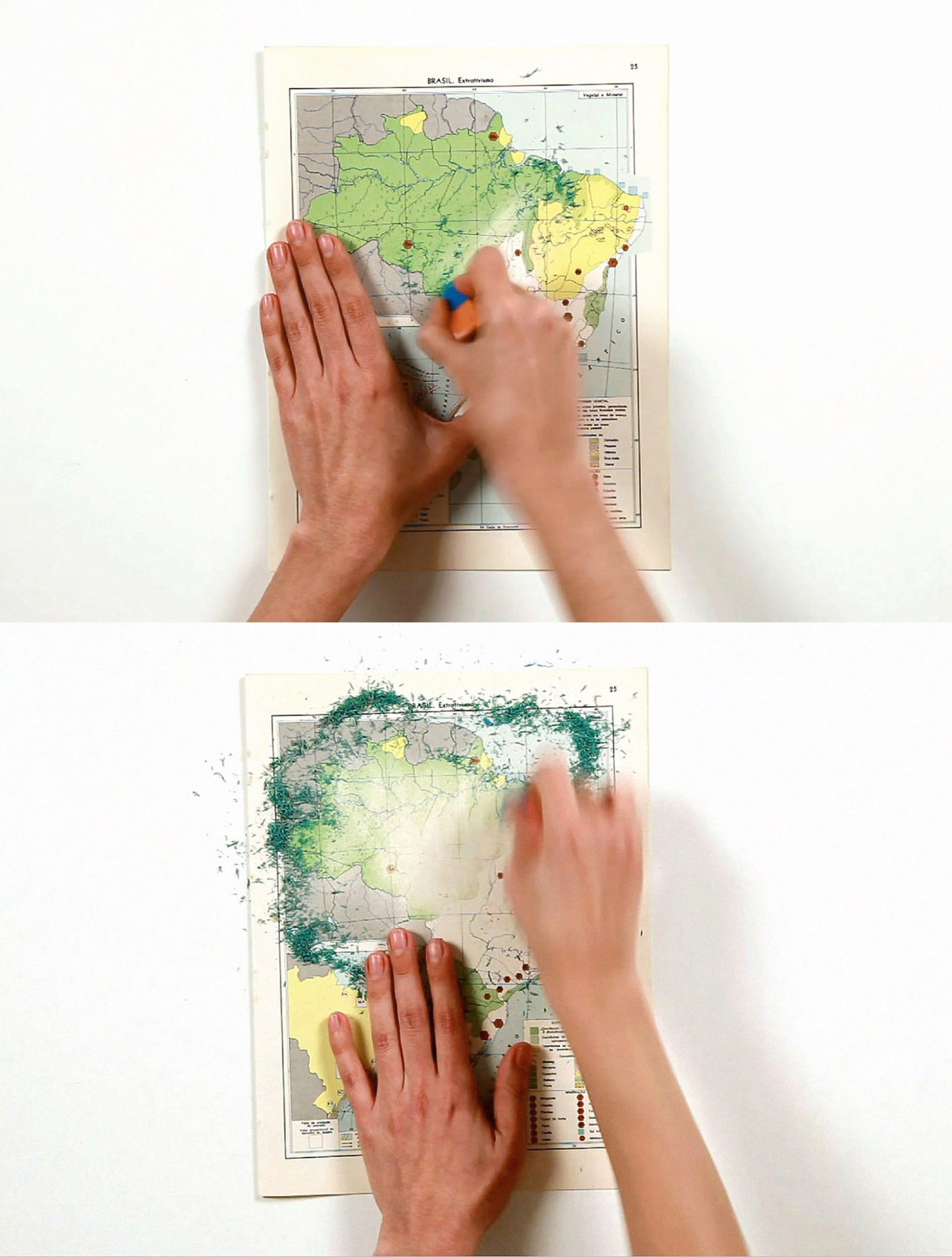
Brasil. Extrativismo
2017
Video
10’14”
Brazil. Extractivism is a recording of the continuous action of erasing a map of Brazil’s territory, in particular, one that presents the predominant extraction activities in each region of the country. The slow disappearance of the map refers to other erasures, as a kind of simulation of the ongoing project of nature’s systematical destruction. The erasing of the map refers to a gesture of the extractive action itself, taken by fury and physical effort, which culminates in rampant and growing deforestation. Even the rubber that erases the map is part of the history of extractivism in Brazil: the extraction of latex in the Amazon.


Brasil. Extrativismo
2022
Action’s record
Photography
62 × 60cm
62 x 60cm


Gravidade na linha do Equador
2015
Painted cutout wood
1000 × 150 cm
[variable dimensions]
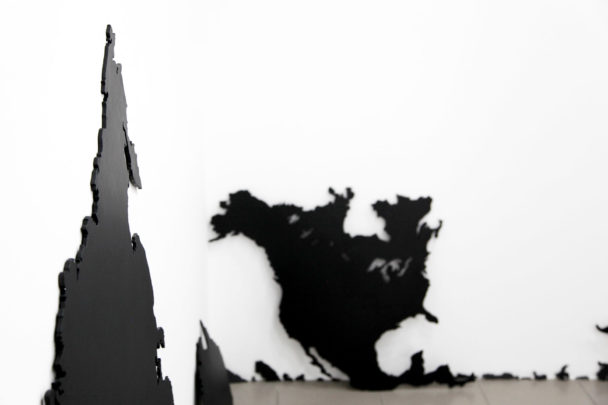
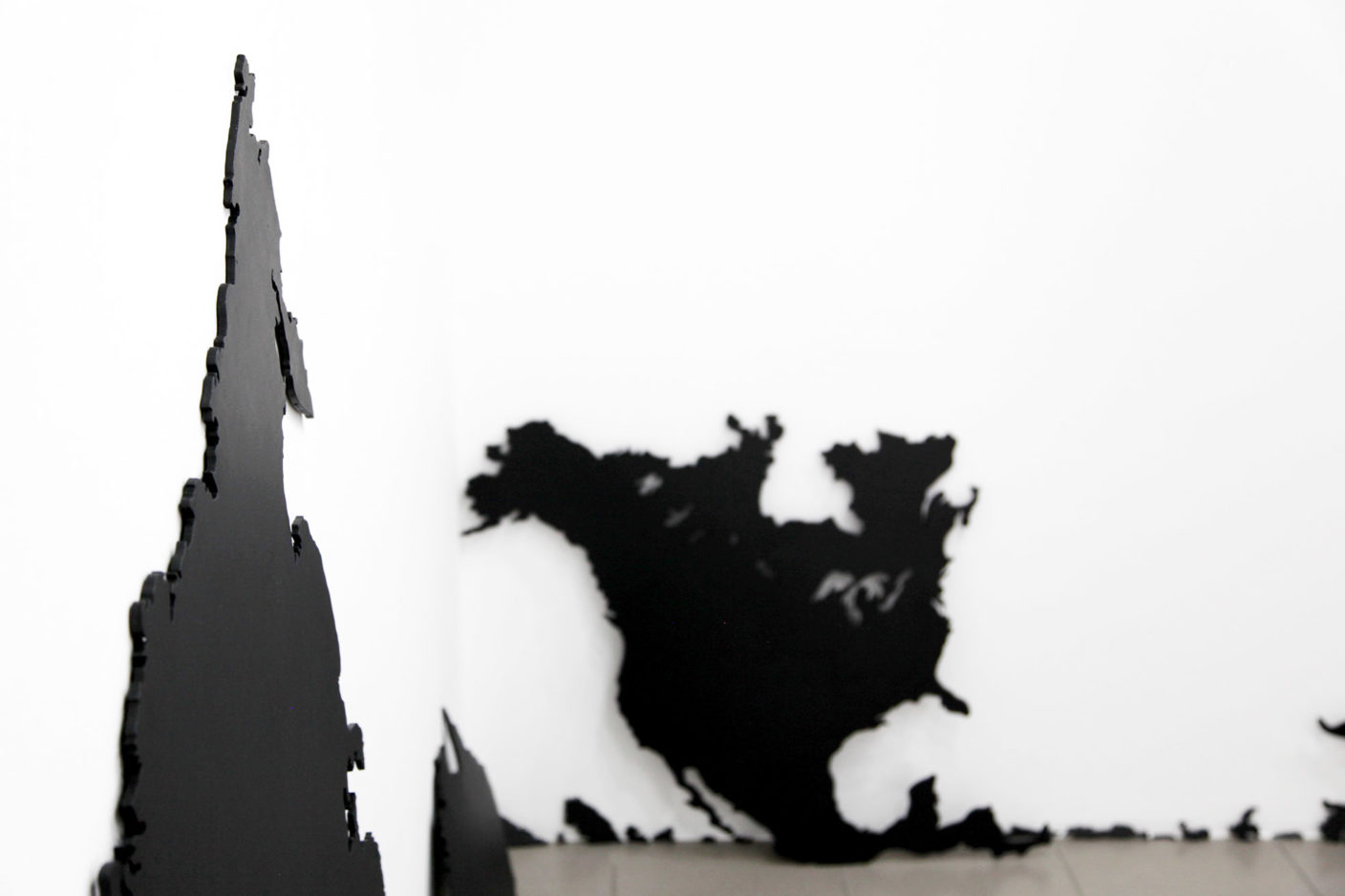
Gravidade na linha do Equador
2015
Painted cutout wood
1000 × 150 cm
[variable dimensions]
What if the world were represented having only one hemisphere, how would it affect our geopolitical perception? In Gravity on the Equatorial Line, all the orthogonal lines orient the Earth’s geographical representation disappears. Another system is established based on an imaginary gravity physicality influencing the territories. In that other system, frontiers, names of continents, and countries or oceans become irrelevant.
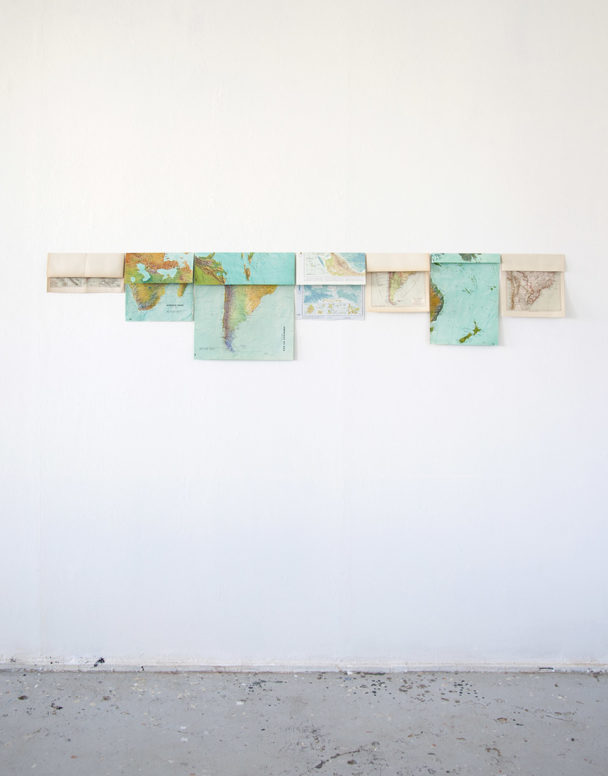
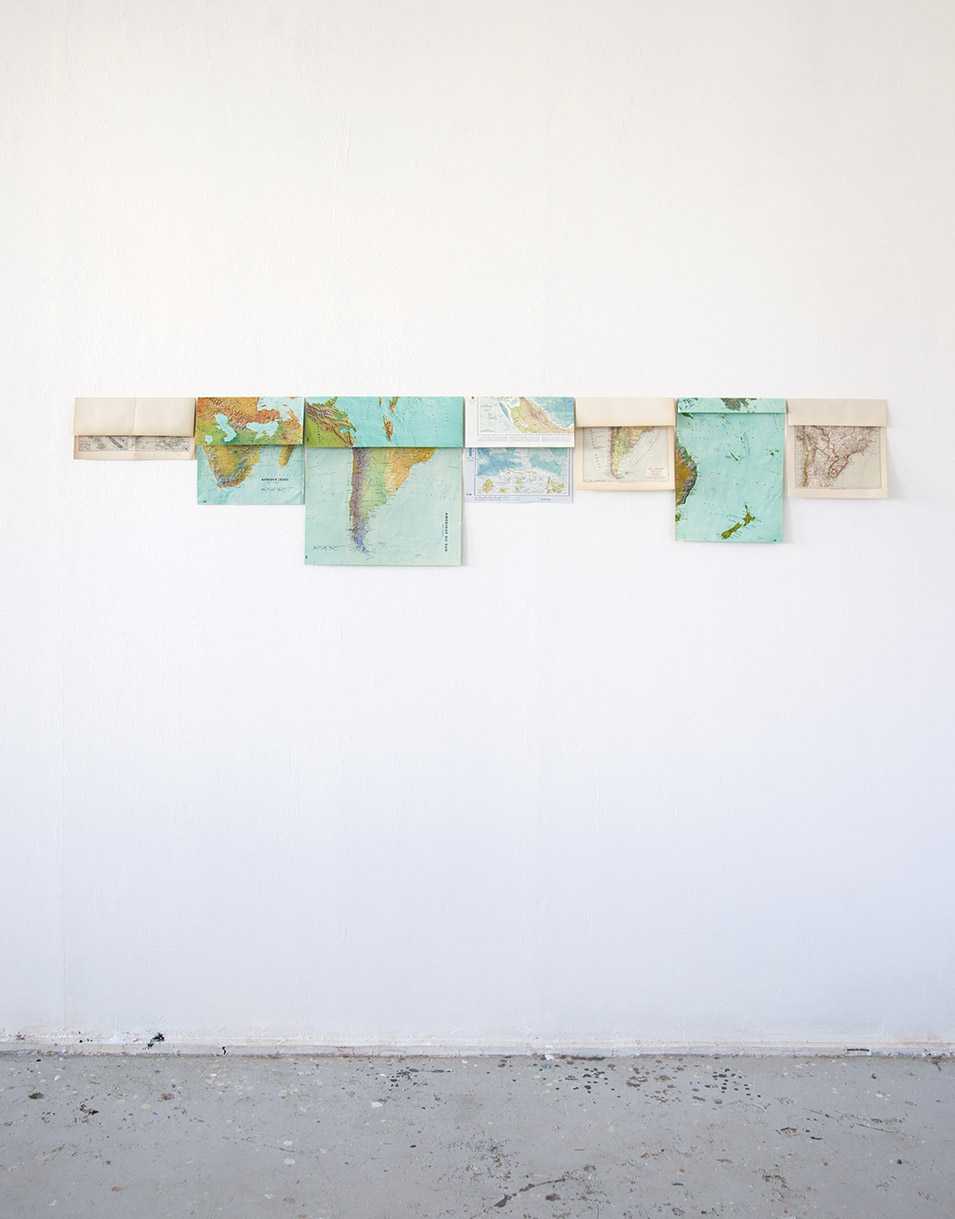
Ao sul [Abaixo da linha do Equador]
2015
Installation with maps
50 × 200 cm
[variable dimension]
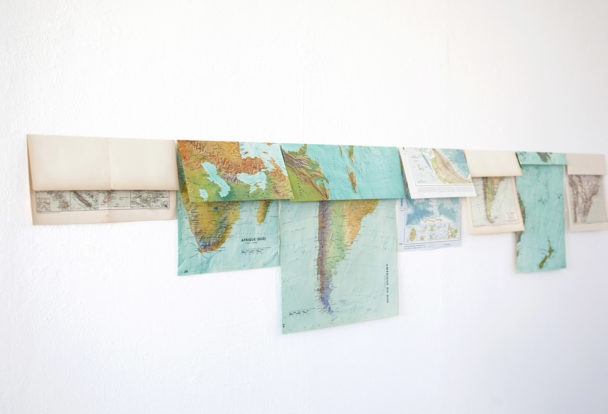

Ao sul [Abaixo da linha do Equador]
2015
Installation with maps
50 × 200 cm
[variable dimensions

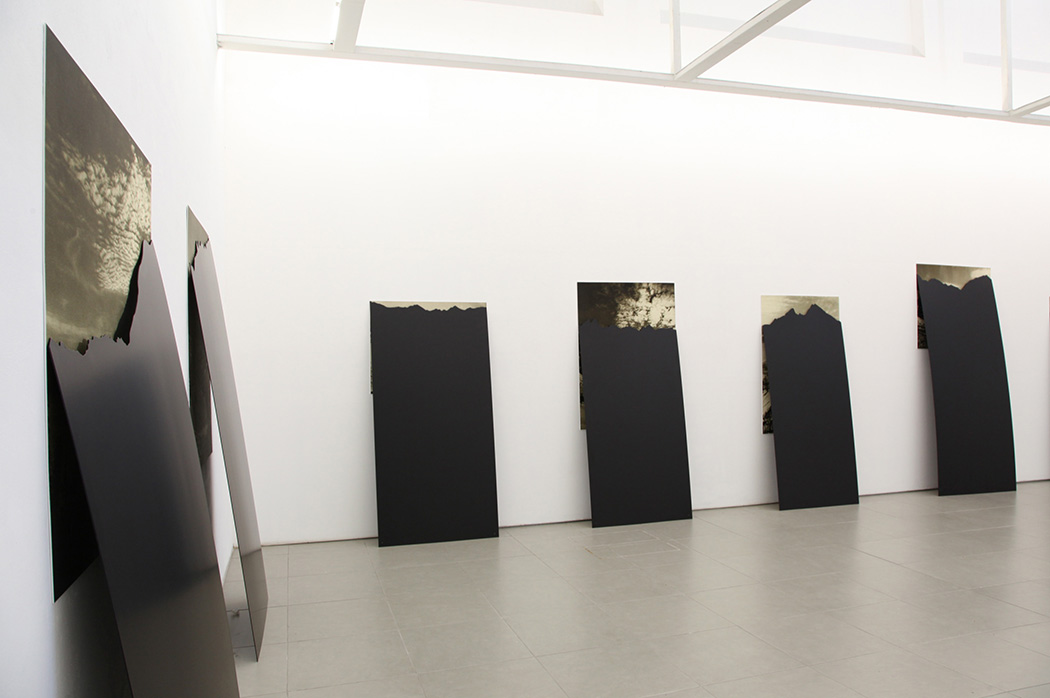
Reflexo Distante
2013
Printing on matte adhesive paper on PS;
electrostatic painting on iron plate
230 × 100 cm
200 × 100 cm

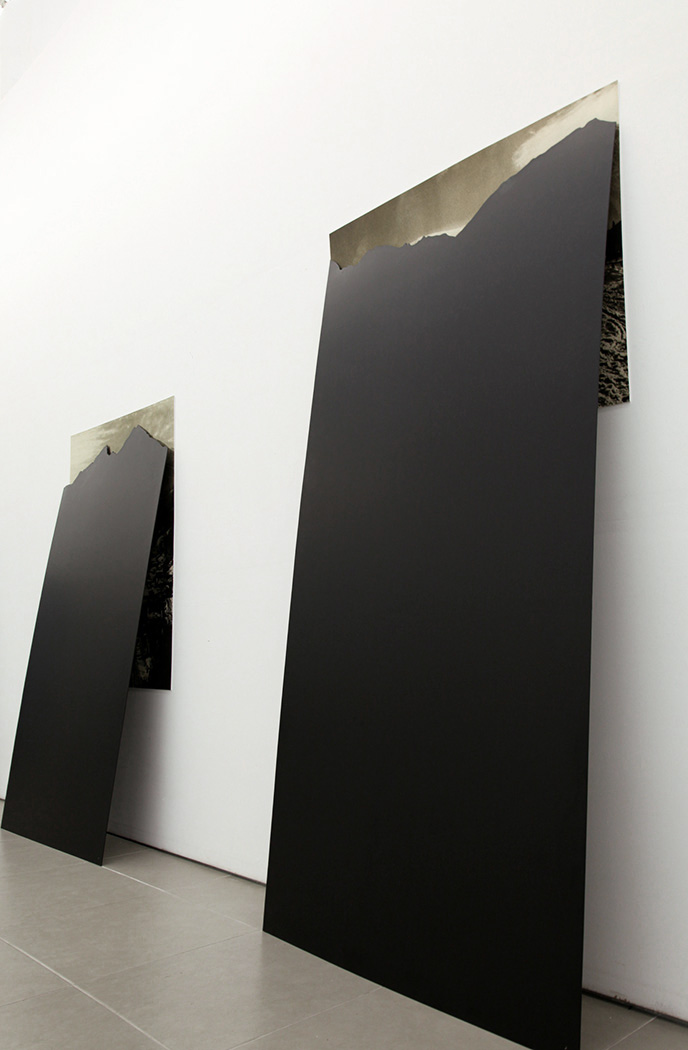
Reflexo Distante
2013
Printing on matte adhesive paper on PS;
electrostatic painting on iron plate
230 × 100 cm
200 × 100 cm

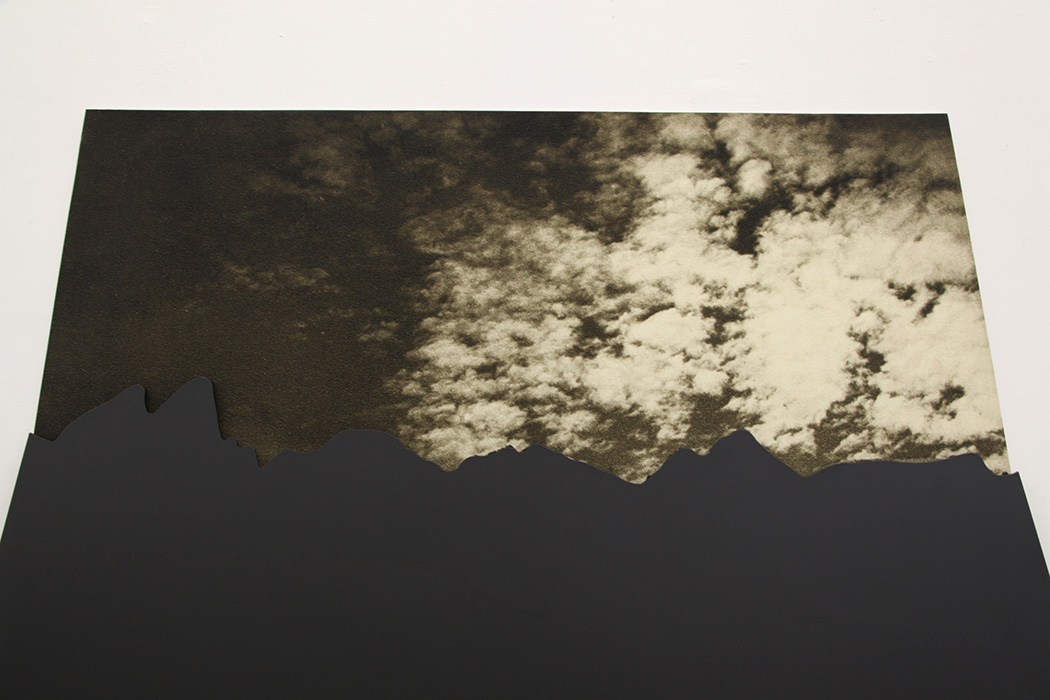
Reflexo Distante
2013
Printing on matte adhesive paper on PS;
electrostatic painting on iron plate
230 × 100 cm
200 × 100 cm
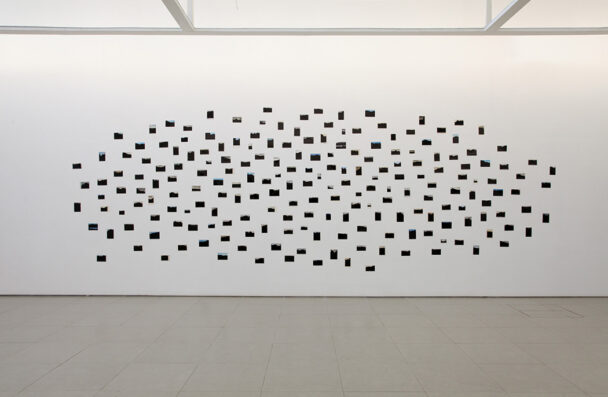
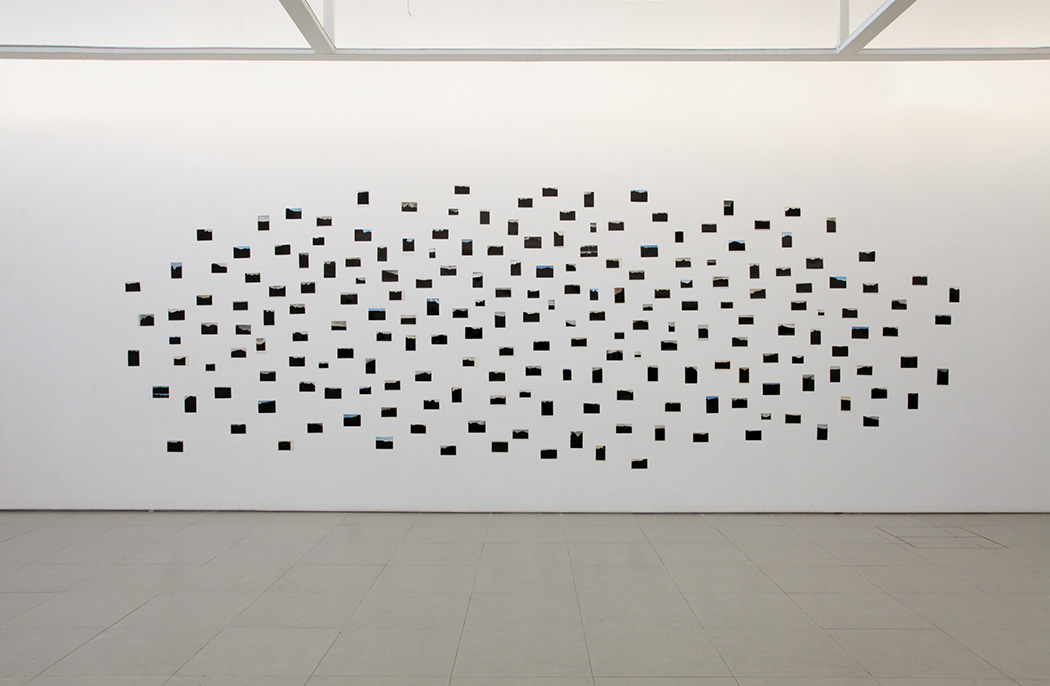
Oblivion
2010
Acrylic on postcard
[variable dimensions]
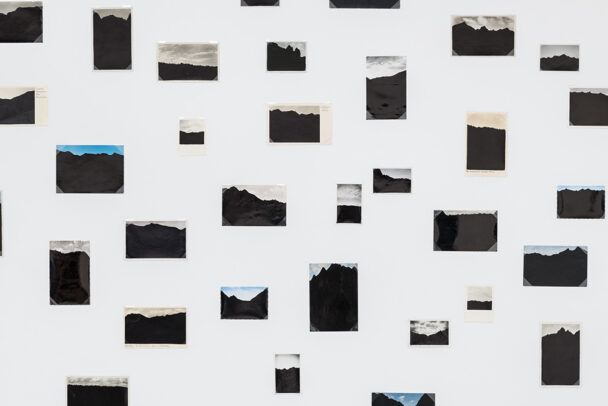
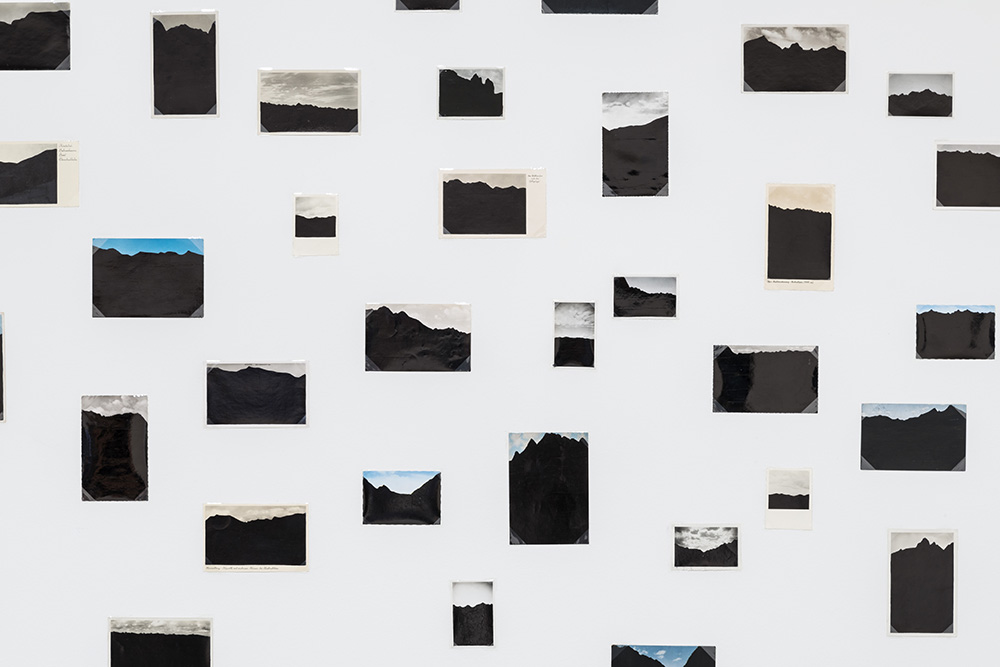
Oblivion
2010
Acrylic on postcard
[variable dimension]
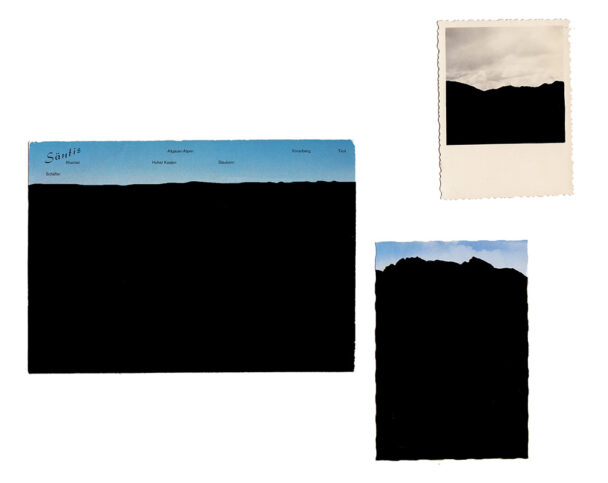
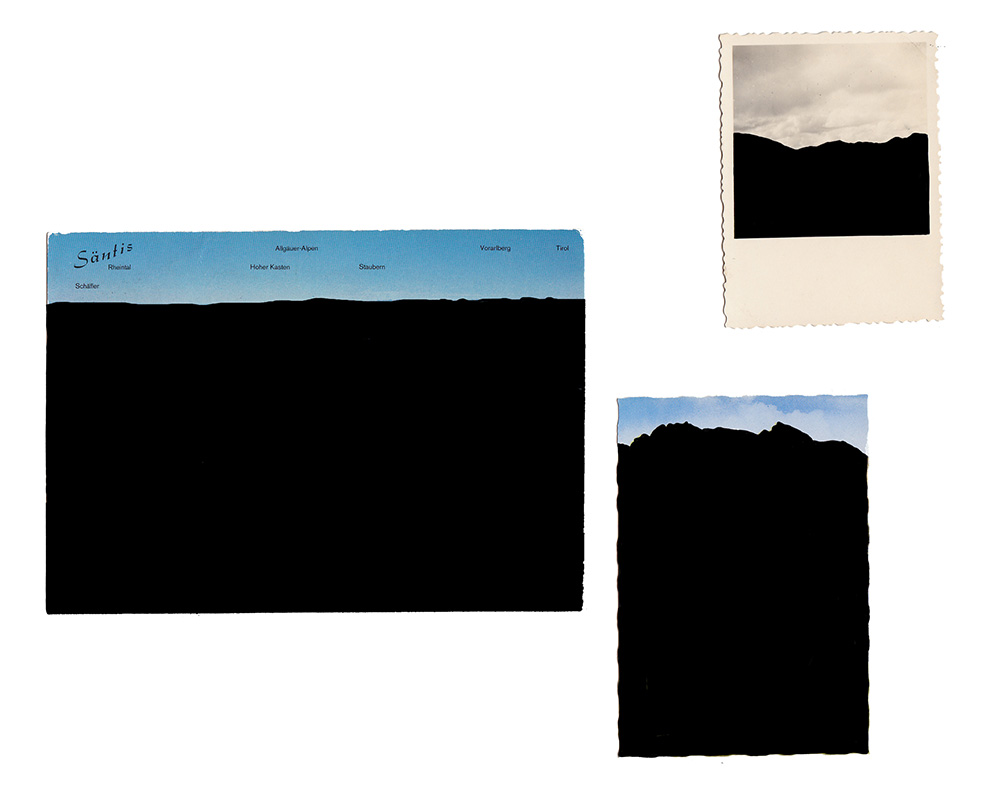
Oblivion
2010
Acrylic on postcard
[variable dimensions]
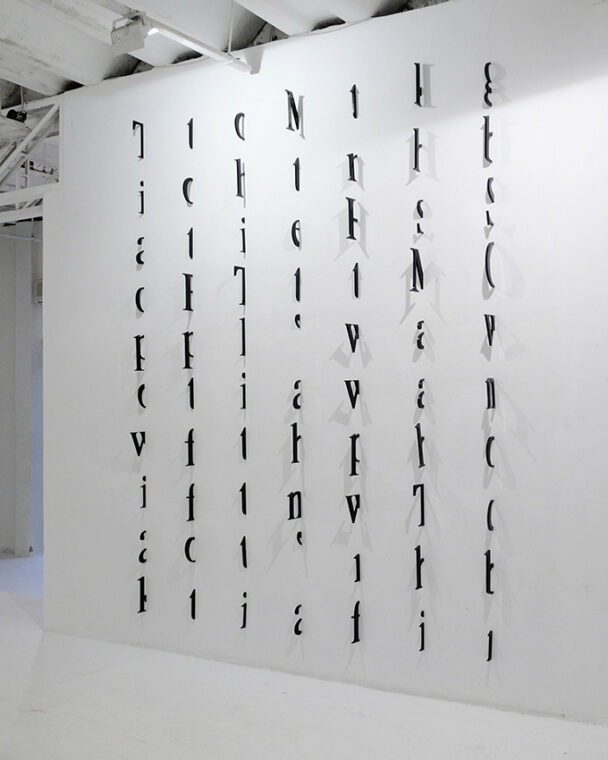

Sem Título [Letras na parede]
2009
Acrylic
15 × 15 × 1 cm
[variable dimensions]


Sem Título [Letras na parede]
2009
Acrylic
15 × 15 × 1 cm
[variable dimensions]

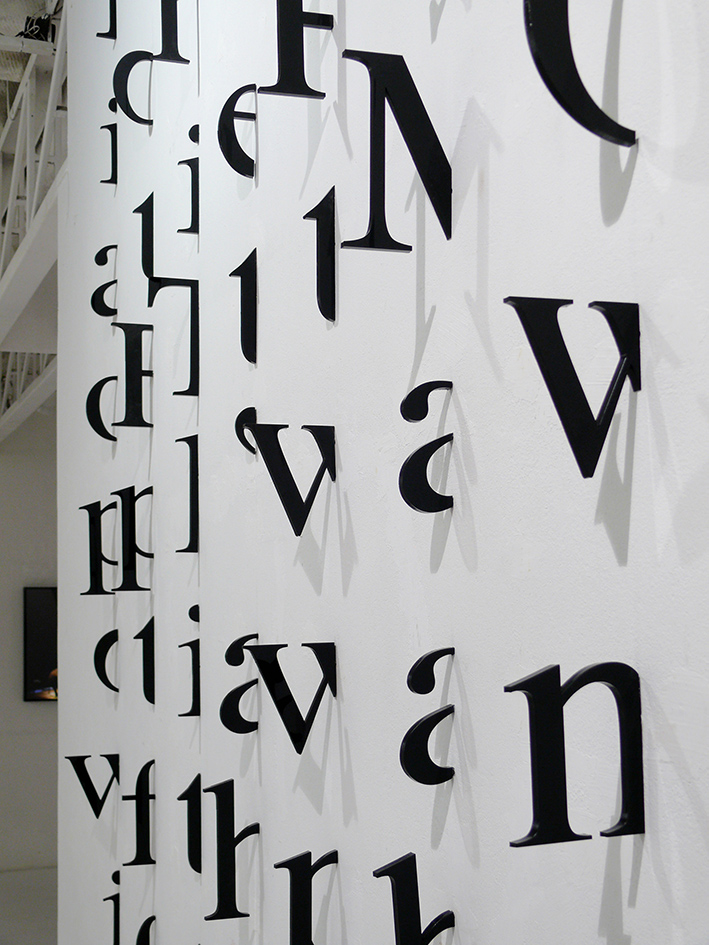
Sem Título [Letras na parede]
2009
Acrylic
15 × 15 × 1 cm
[variable dimensions]
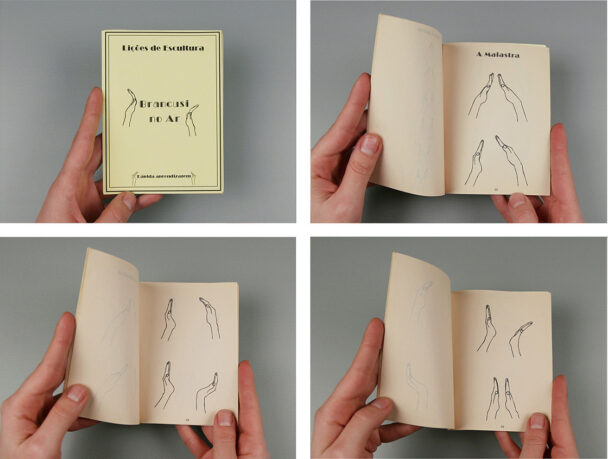

Lições de Escultura: Brancusi no ar
2002|2010
Artist Book
10 × 15 cm


 Português
Português